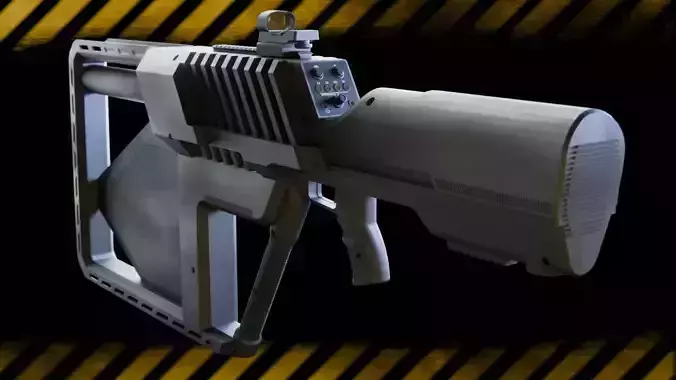1/19
A military-styled weapon-like device to defend yourself against drones.
low poly, hard surface4K maps included
In recent years, the proliferation of drones has introduced both opportunities and challenges across various sectors. While drones have found valuable applications in fields such as photography, agriculture, and delivery services, they have also raised significant concerns regarding security and privacy. In response to these challenges, the development of weapon-like devices capable of electronically neutralizing drones has emerged as a crucial innovation.
These anti-drone devices, often referred to as drone jammers or drone guns, use advanced technologies to disrupt the communication between a drone and its operator. By targeting the radio frequencies or GPS signals that drones rely on for navigation and control, these devices can effectively disable or redirect unauthorized drones. This capability is especially valuable in sensitive areas such as airports, prisons, and military installations, where unauthorized drone activity can pose significant risks.
Moreover, these tools play a vital role in protecting individual privacy. With the increasing capability of drones to carry high-resolution cameras, concerns about unauthorized surveillance have grown. Drone jammers provide a means for individuals and organizations to safeguard their privacy by preventing drones from capturing unauthorized images or video footage.
In addition to security and privacy, these devices also have implications for public safety. Drones operating in restricted airspace or near critical infrastructure can pose risks of collision or interference. By neutralizing these threats, drone jammers help prevent accidents and ensure the safety of people and property.
Overall, the deployment of drone-jamming technology represents a proactive approach to managing the challenges associated with the rapid expansion of drone usage. These devices offer a necessary layer of defense, ensuring that the benefits of drone technology can be enjoyed without compromising security, privacy, and safety. As drone technology continues to evolve, so too will the methods and tools designed to regulate and control their use, underscoring the importance of these innovative solutions in today's interconnected world.
REVIEWS & COMMENTS
accuracy, and usability.



















